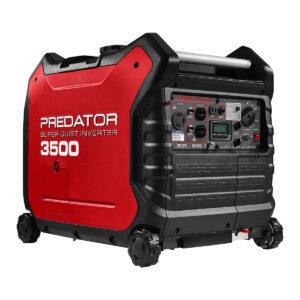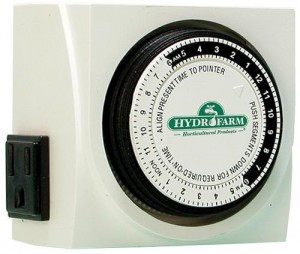 A marijuana generator can supply all electricity necessary for a grow room or even your whole house. So you will be able to grow ‘off the power grid’ by having a generator that is reliable, quiet, powerful, and efficient a top priority.
A marijuana generator can supply all electricity necessary for a grow room or even your whole house. So you will be able to grow ‘off the power grid’ by having a generator that is reliable, quiet, powerful, and efficient a top priority.
When purchasing a new generator make sure that the marijuana generator is water-cooled and fully automated. Be sure to purchase a generator that is large enough to provide your needs and even a bit more to account for fans, heaters, air conditioners, humidifiers, etc.
Write down all of your electrical requirements and then add some more to the ‘playroom’. Many times growers will allow about 1,300 watts per lamp to account for other equipment.
A 5,500-watt generator will run four lamps while not bogging down the generator too much. Honda portable marijuana generator is reasonably priced, dependable, and quiet.
Gasoline-powered marijuana generator motors can be converted to propane, which burns much cleaner and exhaust may be used as a source of Carbon Dioxide (CO2). Diesel generators for truck and train car refrigerators are easy to acquire and efficient.
Generators that run 12 hours a day are a lot of work as they need more fuel and must be monitored every day if not every several hours; depending on the fuel supply that is feeding the generator. If the marijuana generator shuts down prematurely cannabis plants will stop growing and this will affect the lighting cycles of your plants.
Cannabis Timers
 Timers are inexpensive investments that turn lights and appliances on/off at regular intervals. These are your best friend when it comes to watering cycles, ventilation, heating, cooling, and lighting cycles.
Timers are inexpensive investments that turn lights and appliances on/off at regular intervals. These are your best friend when it comes to watering cycles, ventilation, heating, cooling, and lighting cycles.
Timers provide a cost-effective and very efficient solution for anything that requires being turned on and off. Always purchase quality, heavy-duty, grounded timers with adequate amperage ratings to meet your needs.
A favorite among growers for indoor use is the dual-outlet, grounded HydroFarm timer. You can also purchase lighting system controllers where one timer controls your whole lighting system, these are more expensive.
Though well worth the investment when you purchase lighting system controllers and will keep all of your plants set to a single timer rather than having 8 timers for a room of lights. If you are running a high amount of watts, you may want to attach the lamps to a relay since this offers a path for more electricity without needing to change a timer.
Setting-Up HID Lighting System
 Step one in the process of setting up an HID system is to find or build a system to place both your lamp and ballast system up. Both ballast and lamps radiate heat so be sure to take care in positioning them in your growing room.
Step one in the process of setting up an HID system is to find or build a system to place both your lamp and ballast system up. Both ballast and lamps radiate heat so be sure to take care in positioning them in your growing room.
Make sure they are not close to plants or flammable hazards and build shelves if needed. If needed, place heat-resistant materials below and above ballast and lamps to prevent fires.
An exhaust fan and circulation fans are necessary to keep them and the room cool. If the grow room is too hot then move the ballast out of the growing room to remove excess heat.
Always be sure to have electrical cords not contact hot ballast and lamps to prevent electrical shock or fires. The second step in the process is to use a good timer that is connected to each of your lighting ballast to keep a consistent light cycle (photoperiod) even look into whole lighting controls that run off of one timer, instead of many.
Step three in the process is to plug in all HID lamps and timers into an outlet and make sure the outlet is sized properly for the equipment that you are using. Every home has a breaker box with many fuses or breaker switches that control an electrical circuit.
Test all circuits in the house by plugging in lights to other electronics and see which breaker is for which circuit. Breaker switches will be rated for 15, 20, 25, 30, or 40-amp service for each circuit.
Circuits are considered overloaded when more than 80 percent of the amps are used. The fourth step in the process is to find how many amps are drawn by each appliance then add up the number of total watts they use and divide by 120 (if in the US – 120, if in another country – 240).
Be sure to never put a larger breaker in the breaker box than what it is rated for as the breaker or fuse is the weakest link in the electrical system. Use an extension cord that is at least 14-gauge wire or heavier to power your growing equipment.
If any cords are smaller, you risk the chance of not providing enough power to your equipment, which will result in either not being powered or running at partial ability. Step five in the process is to always use three-prong grounded plugs with all equipment.
If your house does not have three-pronged outlets available, you may purchase a three-prong grounded plug and outlet adapter then attach the ground wire to a grounded metal object.
Water will be under and around the HID system, water conducts electricity very easily so be sure that all electrical components are grounded. The sixth step in the process is to insert the bulb into the lighting fixture and plug in the three-prong plug into the timer that is in the OFF position.
Set the timer to the correct time setting that you choose, 12-hour or 18-hour light cycles. Plug the timer into the grounded outlet and then turn the timer on and your ballast will begin to hum, the lamp will flicker and slowly warm up then your lights will be up and running.
Let us know what you think.




Responses